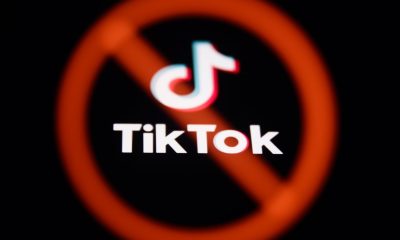Personal Finance
Extra SNAP benefits are ending. Here’s what you can do to offset the loss.

Pandemic-era boosts to Supplemental Nutrition Assistance Program (SNAP) benefits will all be gone this week, forcing millions of Americans to find alternative ways to pay for food.
The timing couldn’t be worse. People are already squeezed, with inflation remaining stubbornly high. Annual grocery prices in January climbed 11.3%. Now, people will have even fewer dollars to stretch.
“SNAP participants are going to see a reduction, and it’s going to go back to what it was before the pandemic,” said Man-Yee Lee, spokesperson at the Greater Chicago Food Depository, which supplies hundreds of food pantries. “That could make sense, except food prices are so high now.”
Participants surveyed by The Senior Citizens League said food was their fastest growing cost over the past 12 months, said Mary Johnson, policy analyst at the League.
New insecurity: Looming cuts to emergency SNAP benefits threaten food security in rural America
Why are extra SNAP benefits ending?
At the onset of the COVID-19 pandemic in 2020, Congress passed the Families First Coronavirus Response Act to temporarily boost SNAP benefits, formerly known as food stamps, to help low-income families weather the crisis that pushed millions of people out of a job.
This week, those extra boosts will expire, a sign of the end of the pandemic health emergency, which President Joe Biden intends to declare in May.
Many states had already let their extra SNAP benefits expire, but the remaining 32 states, plus Washington, D.C., Guam, and the U.S. Virgin Islands will stop receiving the extra SNAP funds in March.
How much will SNAP recipients lose?
Every SNAP household will see at least $95 a month less, but some will see reductions of $250 a month or more, according to the nonpartisan research and policy institute Center on Budget and Policy Priorities.
People, on average, will receive about $90 a month less in SNAP benefits, it said.
Talk about bad timing: Everyone knew extra federal food stamp allotments would end. But the timing couldn’t be worse.
Temperature check on prices: You think food price inflation is easing? Try baking this chicken pot pie recipe.
Seniors may be particularly vulnerable
Some seniors may feel a double whammy. After receiving an 8.7% cost of living adjustment (COLA) in January, the largest since 1981, some seniors already saw their SNAP benefits drop. That’s because benefits are calculated using factors such as income, certain expenses and the number of people in your household. Social Security counts toward income.
In The Senior Citizens League survey, of the 40% of people who received low-income assistance last year, 73% said they were worried the COLA jump would make them ineligible for low-income help.
“We have received a very high volume of email from older households who say they have been forced to cut back,” Johnson said. “Many say they eat only one meal per day, and they continue to visit food pantries.”
Holding on: Strategies for seniors to fight the economic downturn
Medicaid and food: Can food cure high medical bills? Pilot ‘food as medicine’ programs aim to prove just that.
Food banks have been preparing for this day
“As soon as we heard that Congress had made the decision (last December) to rollback emergency benefits, we’ve been preparing since that announcement to make sure we have enough food,” Lee said. “We fully expect come March, when people really start noticing SNAP has decreased back to pre-pandemic levels, we will see increased needs and people visiting the pantry.”
About 42 million Americans receive SNAP benefits, according to the U.S. Department of Agriculture.
To find a food pantry near you, try the nonprofit Food Finders website.
No waste: Waste not: Where Wegmans’ fresh abundance goes when it’s ‘less than perfect’
Stretching food dollars: Expired foods get new life from budget shoppers as inflation soars, but are they safe?
What else can people do to offset the drop in SNAP benefits?
-
Check your eligibility. Surprisingly, about 8 million Americans are eligible for some SNAP benefits but may not even know, said Zareena Meyn, executive director at mRelief, a nonprofit with a free platform where people can enter basic information to see if they qualify for SNAP and if so, sign up. The gap is especially wide among seniors, where 58% are eligible but not registered, she said.
When people check their eligibility, they may also find they qualify for more, Meyn said. For example, people may not realize if the number of people in your household changed, your benefits might, too. Or that seniors and people with disabilities can report medical expenses and, in some cases, a recurring medical expense of more than $35 per month can qualify them for an increase, she said.
-
Summer kids meals. Last December, Congress allocated $40 million to fund a program to give families of about 30 million children up to age 18 $40 per child a month to spend on groceries using electronic benefit transfer, or EBT, cards or up to 10 meals at a time to eat at home during the summer when children aren’t in school.
-
Special Supplemental Nutrition Program for Women, Infants, and Children, or WIC. An underutilized program, according to Lee and Meyn, WIC can supplement the food budget of low-income pregnant women or women with children up to age 5. “If you receive SNAP, you automatically qualify,” Meyn said.
-
Double Up Food Bucks. Twenty-five states have farmers markets or grocery stores that’ll double the value of your SNAP benefits on qualifying purchases. “The wins are three-fold: low-income consumers eat more healthy food, local farmers gain new customers and make more money, and more food dollars stay in the local economy,” according to the USDA.
To find a Double Up participant near you, check Double Up Food Bucks.
-
Senior food services. Learn more about senior meal programs such as Meals on Wheels and group meals at senior centers or Area Agencies on Aging.
Once you have your immediate needs met, Johnson also reminds seniors tocontact your representative in Congress and “describe what you receive in Social Security benefits and what you have left to spend on food after you pay your rent, utilities and prescription drug bills and healthcare bills.”
Medora Lee is a money, markets, and personal finance reporter at USA TODAY. You can reach her at mjlee@usatoday.com and subscribe to our free Daily Money newsletter for personal finance tips and business news every Monday through Friday morning.
This article originally appeared on USA TODAY: Feeling despair with extra SNAP money ending? Here’s what you can do.
Read the full article here

-

 Side Hustles6 days ago
Side Hustles6 days agoWhy the Best CEOs Think Like Anthropologists
-

 Make Money7 days ago
Make Money7 days agoEarn More in 2025: Top 10 High-Yield Savings Accounts Revealed
-

 Side Hustles4 days ago
Side Hustles4 days agoThis User-Friendly H&R Block Software Package is Only $40, While Supplies Last
-

 Side Hustles7 days ago
Side Hustles7 days ago10 Roles That Are Surprisingly Well-Suited for Outsourcing
-

 Side Hustles7 days ago
Side Hustles7 days agoWhat to Do If TikTok is Banned — How to Protect Your Brand
-

 Passive Income7 days ago
Passive Income7 days agoHow Pets Can Promote Better Health and Well-Being in the Workplace
-

 Investing4 days ago
Investing4 days agoTikTok faces US ban deadline as users brace for fallout By Reuters
-

 Personal Finance7 days ago
Personal Finance7 days agoBiden cancels more student loans with one week left to his term


















